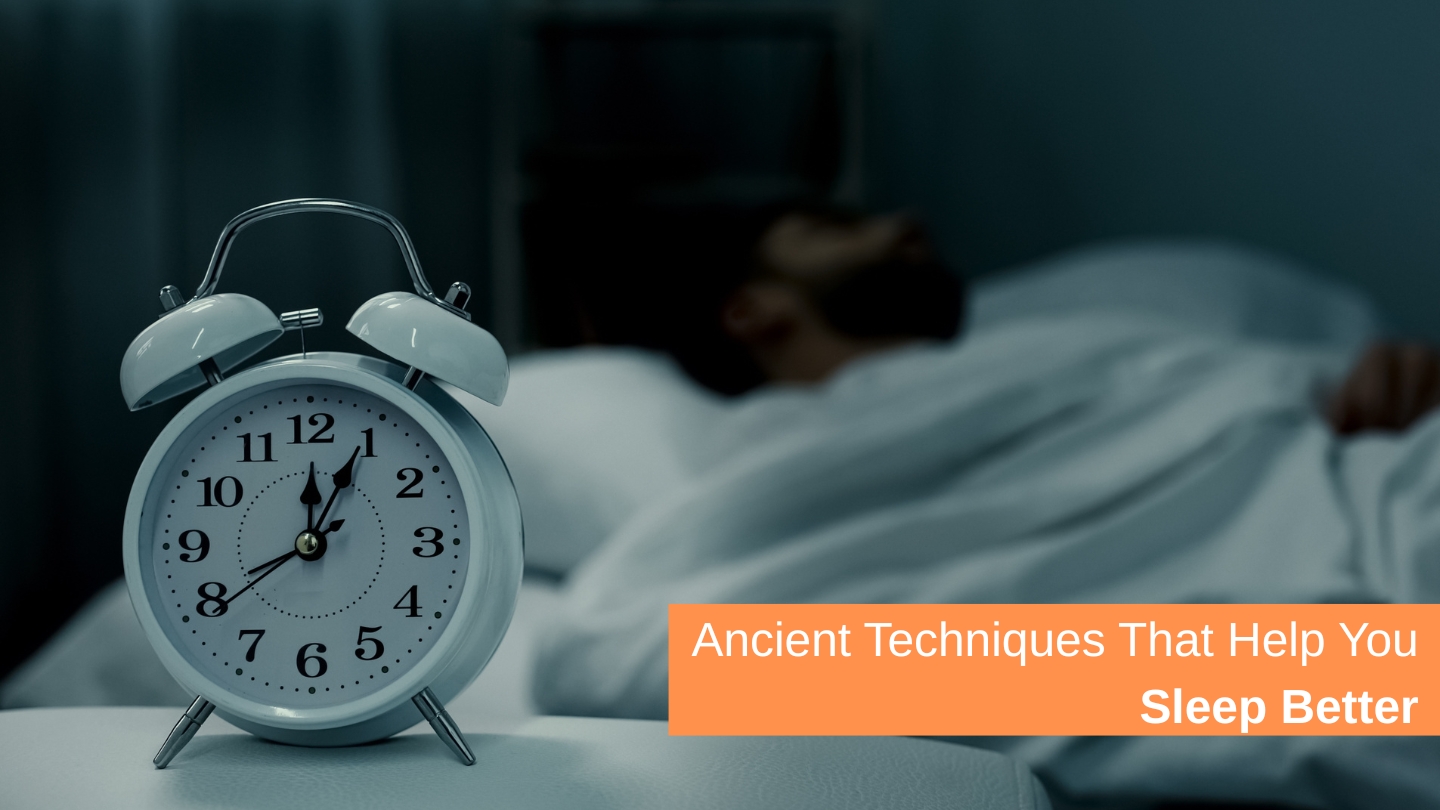
Ancient Techniques That Help You Sleep Better
Sleeplessness may be one individual’s problem, but the issue is no longer personal. It is a global concern, with over 16% of the world’s population battling with quality sleep issues.
There is no time; the stress level is increasing, the screen time, and the erratic schedule are taking their toll; the needed quality of sleep that truly relaxes and repairs the body and mind has become elusive.
The outcome is impaired immunity, cardiac conditions, mood fluctuations, irritability, lack of focus, sleepiness during the day, loss of energy, and disturbance of the normal sleep-wake cycle in the body.
What does sleep do, and why is it important?
According to the Sleep Foundation, ‘Sleep is a complex biological process made up of several stages that cycle throughout the night. These stages include rapid eye movement (REM) sleep and non-REM sleep, each of which plays an important role in restoring the body and brain. Non-REM sleep is especially important for physical repair and immune function, while REM sleep supports memory consolidation, learning, and emotional regulation.
But when sleep is disrupted or cut short, these processes are interrupted, leading to sleep deprivation, which can affect everything from mood and concentration to heart health and immune response.’
Some of the most beneficial aspects of sleep are:
- Maintaining weight
- Making a person look younger
- Improvement in memory
- Reduction in stress
- Mood enhancement
How to sleep better
Traditional treatments such as CBT-i are highly effective in enhancing the quality of sleep, but these involve structured and regular sessions, and their cost and availability are mostly a challenge. This is where certain ancient practices like yoga and tai chi, which are not very difficult, become very useful.
But before we go deeper into exploring these ancient practices, here are some quick tips that can help you set the pace and foundation to let these techniques work for you more effectively.
1- Try and have an early dinner. The best time would be the 7-8 pm range to ensure that the body has ample time to process the food and induce sounder sleep.
2-Experts highly suggest bedtime at the same time every night( before 11 pm) in an attempt to form an invariable pattern of sleep.
3- Turn off your phones and other appliances at least 30 minutes before bedtime. Do not scroll brainlessly before going to sleep.
4-Prepare your room for sleep. Turn the lights down and turn up the heating system to ensure that it is comfortable to sleep.
5- Turmeric in warm milk or chamomile tea is also a great comfort in sleep.
6- Step out in the sun in the morning. The sunlight initiates the production of melatonin in the body, usually after 16 hours. This hormone is responsible for deep, uninterrupted sleep.
7-Journaling before bed helps to pass on the troubling thoughts on paper, hence decluttering and clearing the mind, leading to better sleep.
Ancient practices for sleeping better
Yoga
A study published in the National Library of Medicine indicates that older adults practicing Yoga regularly had better overall sleep quality, fewer episodes of disturbed sleep, took less time to fall asleep, less daytime dysfunction, less use of sleep medications, and also felt more rested and energetic in the morning. Yoga exercises involve stretching and relaxing of muscles, causing significant physical and mental exertion, resulting in less sleep latency, more deep sleep, less sleep disturbances, and better sleep efficiency, the study stated.
Asanas for sound sleep are:
- Child’s pose (shishu asana)
- Cat-cow pose(marjari asana)
- Happy baby pose (ananda balasana)
- Reclined pigeon pose (supta kapot asana)
- Legs up the wall pose (viparita karani)
Pranayam practices for deep sleep include:
- Bhramari pranayama, or the bee breath
- Nadi shodhan pranayama, or the alternate nostril breathing
- Sama vritti pranayama or box breathing
Yoga nidra is a form of deep relaxation and works like a reset button for the mind and body. Yoga therapist Judi Bar says with yoga nidra, the goal is to move into a deep state of conscious awareness sleep, which is a deeper state of relaxation with awareness. This state involves moving from consciousness while awake to dreaming and then to not-dreaming while remaining awake — going past the unconscious to the conscious.
Though this sounds a little complicated, it involves simple steps like connecting to your heart’s deep desire, setting an intention, finding your inner resource, scanning your body, becoming aware of your breathing, experiencing and accepting your thoughts and feelings, and experiencing joy. The practice is best done with an expert who guides you step by step to achieve the best state of mind.
Tai-chi
In another study published by the National Library of Medicine, Tai Chi was found to be an effective behavioral therapy to treat insomnia and improve sleep quality among healthy subjects and patients with chronic conditions. Tai-chi is a Chinese martial art and system of callisthenics, consisting of sequences of very slow, controlled movements. In Chinese philosophy, it is the ultimate source and limit of reality, from which spring yin and yang and all of creation. The practice is recommended for an hour, two to three times a week.
Sleep is not a luxury. It is a basic necessity through which your body bounces back to a healthy state after hours of physical and mental stress. Practice the above simple techniques and give your mind and body the nourishment it needs to make you healthier and happier.
Related
BY: Sukino
COMMENTS: No Comments
